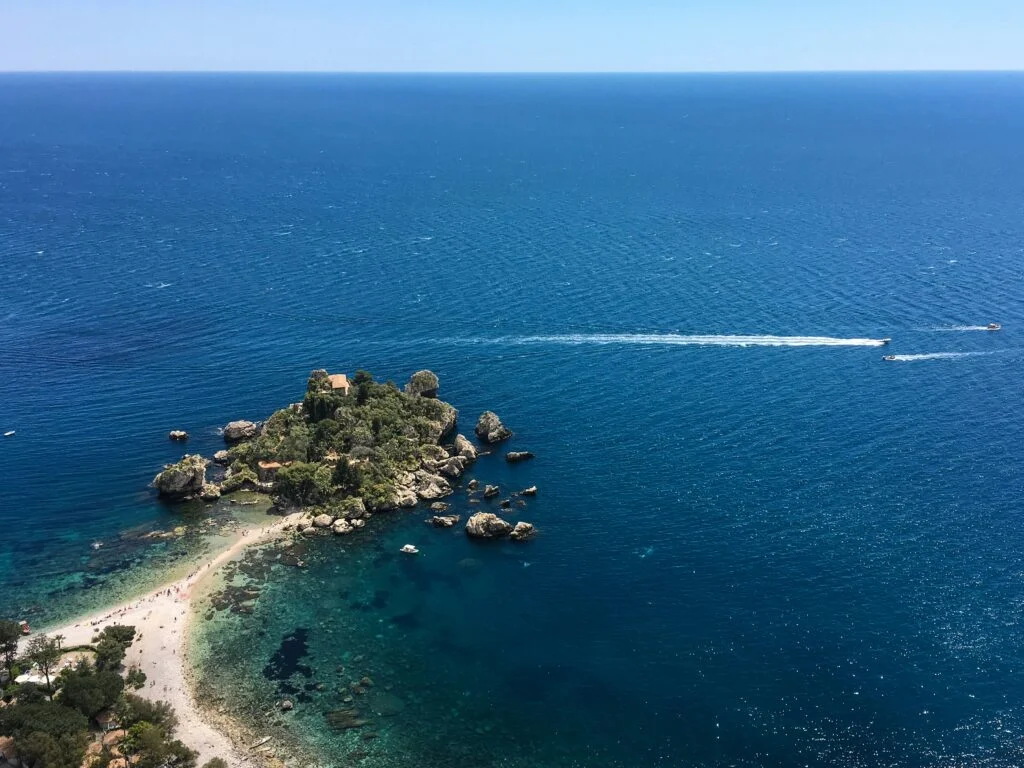
Introduction to the Forbidden Island
The concept of undiscovered or restricted islands often captures the imagination, and this is especially true for the island in question that operates as a tourist-free zone. Known for its breathtaking landscapes and rich cultural heritage, this island has imposed a ban on tourists, fostering an untouched environment that preserves its unique attributes. The reasons for this ban stem from a desire to protect the indigenous culture, safeguard the fragile ecosystem, and maintain the island’s integrity for future generations.
This island is home to several endangered species of flora and fauna, making environmental preservation crucial. Tourists can often inadvertently disturb local wildlife and disrupt the delicate balance that sustains these ecosystems. Thus, the prohibition of tourists serves to minimize human impact, allowing nature to thrive unencumbered. By restricting access, the island’s authorities aim to create a sanctuary where both the environment and local traditions can flourish without external interference.
Moreover, cultural preservation plays a pivotal role in the ban on tourism. The island is inhabited by indigenous groups whose customs and ways of life are at risk of dilution through mass tourism. The government recognizes that tourist influx can lead to commercialization, undermining the very essence of the island’s identity. By limiting visitors, the community is granted the opportunity to practice their customs, traditions, and languages uninfluenced by outside forces. This limited accessibility adds an air of mystery and allure to the island, setting the tone for the adventure that unfolds for those fortunate enough to experience its wonders.
In essence, the island’s status as a tourist-free zone is a carefully considered measure fostering both environmental and cultural preservation, making it a unique destination that stands apart from more commercialized tourist hotspots.
The Allure of the Island: Why I Decided to Visit
Every traveler has that one destination that beckons them with an irresistible charm, and for me, it was this elusive island, a place renowned for its strict prohibition on tourists. The allure of the unknown is a powerful motivator, and the very notion that access was limited only heightened my curiosity. The island, shrouded in mystery and tales spun by previous explorers, promised experiences that could not be found in mainstream destinations.
My adventurous spirit often drives me towards places that lie off the beaten path. While planning my travels, I have learned that these obscure locations often harbor untold stories, rich cultures, and breathtaking landscapes waiting to be uncovered. The prospect of exploring a site that remains untouched by mass tourism was an exhilarating thought. The idea of embarking on a journey to this island, where restrictions were stringent and most individuals would never tread, became a tantalizing challenge I felt compelled to accept.
Motivated by a sense of adventure, I embraced the uncertainties that typically accompany such expeditions. The challenges—limited information, potential language barriers, and extreme isolation—only fueled my desire to navigate the complexities of visiting this restricted site. I understood that stepping into the unknown required careful planning and a willingness to adapt. Such endeavors often lead to personal growth and unforgettable memories, further solidifying my resolve to experience the island’s secrets.
Ultimately, my curiosity and desire to challenge the norms of travel drove me to this secluded spot, a place shunned by many but welcomed by an intrepid few. As I prepared for the journey, I could not shake off the excitement that came with the possibility of uncovering a hidden gem seldom seen by the eyes of outsiders.
The Journey: Getting to the Island Against the Odds
Planning a trip to a destination that bans tourists might sound like an impossible task; however, the allure of undiscovered experiences often compels adventurers to take risks. My journey to the island began with meticulous research and strategy, as I sought information on the island’s strict isolation policies. Understanding the logistical framework was crucial, as the island is known for its stringent regulations that limit access to only a select few. Armed with this knowledge, I set out to devise a comprehensive plan.
The initial step involved acquiring transportation. Given the island’s geography and limited ferries, I had to secure a small boat that could navigate the surrounding waters. This process was laden with uncertainty—many local fishermen were hesitant to assist, fearing repercussions from authorities. Nevertheless, I managed to connect with a knowledgeable guide who was experienced in navigating these waters. However, this connection came with its own set of challenges, such as agreeing on a discreet rendezvous point to maintain confidentiality.
On the day of departure, adrenaline coursed through me as I made my way to the prearranged meeting spot. The weather was unpredictable, which added another layer of anxiety to an already exhilarating experience. As the boat cut through the waves, I was acutely aware of the potential for interception or unforeseen obstacles. Navigating these waters lit a fire of determination within me, and I could feel the thrill of venturing into the unknown.
Upon approaching the island, I was struck by its natural beauty, but I knew my real challenge lay ahead: disembarking without drawing attention. Utilizing every ounce of creativity and resourcefulness I possessed, I maneuvered through dense foliage, adhering to a stealthy approach. The journey to this elusive island was both unforgettable and a testament to the power of persistence, showcasing that sometimes the greatest adventures arise amid daunting circumstances.
First Impressions: Entering the Hidden Paradise
As soon as the boat approached the island, a sense of anticipation filled the air. The azure waters sparkled under the midday sun, revealing glimpses of vibrant coral reefs beneath the surface. Upon stepping onto the shore, the soft powdery sand felt luxurious against my skin, contrasting sharply with the rigid, urban life I had left behind. The island was strikingly untouched, its lush greenery enveloping me in a breathtaking embrace, as though nature itself sought to protect this sanctuary from the outside world.
The fragrance of wildflowers and saltwater mingled, creating an intoxicating aroma that filled my lungs. A gentle breeze rustled through the palms, generating a serene melody that harmonized with the distant sound of waves lapping against the rocky shoreline. As I ventured further inland, the vibrant colors of the flora captivated my senses: vivid reds, deep blues, and radiant yellows fluttered around me, each hue more mesmerizing than the last. It was a painter’s palette come to life, thriving in the absence of human interference.
Yet, amid the idyllic beauty lay an underlying eeriness—a remoteness that swept over me like a shroud. The absence of other tourists, a rarity in today’s world, lent an air of exclusivity to this hidden paradise. Sounds were amplified; the rustling leaves, the chirping of unseen birds, and the distant echo of waves crashing against the cliffs felt both intimate and lonely. It was as if I had stumbled upon a clandestine world, untouched by time, reserved for those fortunate enough to breach its barriers. The island, in all its glory, was a reminder of nature’s power to remain unyielding in a rapidly changing world, promising both wonder and solitude to those who dared to enter its realm.
Encounters with the Locals: Culture and Customs
During my time on the island, I had the unique opportunity to engage with the local inhabitants, which provided profound insights into their customs and perspectives. The locals maintain a rich cultural heritage that is intricately woven into their daily lives, influencing everything from their culinary practices to their social interactions. In approaching these exchanges, I prioritized respect and an open-minded attitude, aware that my presence as an outsider might evoke curiosity and, potentially, wariness.
One of the first elements that struck me was the deep-rooted sense of community among the islanders. They are guided by traditions that celebrate togetherness and mutual support. For instance, communal gatherings are commonplace, and these events serve as vital opportunities for sharing stories, music, and culinary delights. Engaging in these activities allowed me to witness firsthand how customs are not merely traditions but living practices that foster a sense of belonging among the people.
Furthermore, I learned that each interaction requires a careful balance. While the locals exhibited an inherent warmth and willingness to share their way of life, there was also an understanding that their culture must be treated with care. Many locals expressed a desire for visitors to appreciate their customs without transforming them into commodities for entertainment. This awareness prompted me to approach every conversation with a sense of humility and a commitment to learning rather than imposing my perceptions.
Through these encounters, I discovered fascinating insights into their beliefs, art forms, and daily routines. The locals expressed pride in their heritage and shared stories that highlighted their historical connections to the island. This led to a richer understanding of their worldview and how it shapes their interactions with outsiders. The experience was marked by a delicate dance between appreciation of their culture and the need to avoid the pitfalls of cultural intrusion. Ultimately, these interactions were enlightening and offered a window into a dynamic and vibrant community that thrives on the island despite its tourist restrictions.
Experiencing the Nature: Flora and Fauna Unique to the Island
The island presents a rare opportunity to experience a diverse array of flora and fauna, many of which are completely unique to this isolated environment. Its geographic isolation has allowed species to evolve without influence from external ecosystems, creating a remarkable biological tapestry. This extraordinary biodiversity is not just a natural wonder; it plays a crucial role in the ecological balance of the region.
Among the distinctive plant life, one can find endemic species that have adapted to the island’s specific climate and soil types. For instance, the vibrant native orchids, renowned for their intricate structures and limited geographical range, are a sight to behold. These flowers not only enhance the aesthetic beauty of the landscape but also provide essential habitats and food sources for various pollinators, which contribute significantly to the island’s ecological success.
The island is also home to unique animal species. One notable example is the flightless bird that serves as a vital part of the ecosystem. These birds, unable to migrate long distances, play a pivotal role in seed dispersion, thus ensuring the continued growth of the island’s vegetation. Additionally, the diverse marine life surrounding the island features unusual species of fish and coral, highlighting the need for ocean conservation efforts in this pristine environment.
Preserving the island’s unique fauna and flora is paramount. The delicate balance of this ecosystem could be disrupted by external influences such as climate change and human encroachment. Conservation efforts are vital in maintaining biodiversity, which in turn supports overall ecosystem health. By advocating for ecological preservation, we can ensure that future generations will have the opportunity to cherish the island’s rare beauty, safeguarding both the environment and the unique species that reside within it.
Reflections on Solitude and Serenity
Spending time on an island that bans tourists presented a unique opportunity to explore the depths of solitude and the serenity of untouched nature. Away from the hustle and bustle of modern life, I found myself in a tranquil landscape that encouraged introspection and self-discovery. Initially, the absence of familiar sounds, such as phone notifications or bustling crowds, created a sense of disquiet. However, as the days progressed, I began to embrace the peacefulness that surrounded me.
This environment fostered a profound connection with nature, allowing me to appreciate the subtle beauty in every moment. The rustling of leaves, the gentle lapping of waves, and the distant calls of birds became the soundtrack of my existence. I came to realize that these sounds, often drowned out by daily distractions, held a calming power that gradually shifted my mental state from chaos to clarity. The island’s silence was not empty; rather, it was filled with the whispers of nature, which became a form of meditation for me.
The solitude on the island enabled me to confront my thoughts without the interference of external opinions or noise. In this newfound silence, I unearthed feelings that had long been buried beneath the pressures of daily life. It was as if the island prompted me to reflect on my personal journey and aspirations. Each sunset became a moment of gratitude, a reminder of the beauty that often goes unnoticed in our fast-paced world. I started to understand that serenity is not merely the absence of noise, but rather a state of being that encourages the exploration of both inner and outer landscapes.
Ultimately, the experience on this secluded island highlighted the transformative power of solitude. It allowed me to reconnect with myself and the natural world around me, offering invaluable insights that linger long after I returned to the noises of civilization. The lessons learned in this serene environment continue to resonate, reminding me of the importance of carving out moments of stillness amidst life’s relentless demands.
Challenges Faced: The Reality of a Tourist-Free Zone
Visiting an island that actively restricts tourism brings with it a set of unique challenges. The first noticeable difficulty is a profound lack of resources. The infrastructure on such islands is primarily designed to accommodate the local community and reflect conservation efforts, rather than provide the amenities that travelers might typically expect. Basic necessities, such as food and medical supplies, can be limited or available only in very small quantities, leading to potential strain on any visitor. I quickly realized that I had to adapt my expectations and make provisions early on, as local outlets simply did not stock the range of products one might find elsewhere.
Navigation posed another significant challenge. While some areas of the island were familiar to inhabitants, the lack of signage or well-worn paths made it difficult to explore without assistance or a reliable map. Many trails were left untouched, often obscured by vegetation, creating an environment where disorientation was common. As I ventured further into the island’s interior, I found that my sense of direction was continually tested. Without a clear guide to direct me, I was forced to remain attentive and cautious while traversing unmarked pathways.
Lastly, one cannot ignore the inherent dangers tied to isolation. The remote nature of the island means that emergency services, if they even exist, are far away. This reality heightens the stakes and could turn a minor accident into a serious crisis. There were moments when the isolation felt overwhelming, and I had to confront the psychological effects that such remoteness can impose. Experiencing complete silence in such a tranquil yet desolate environment forced reflections on the fragile balance between humans and nature. Each challenge reinforced the understanding that this island was not merely a thrilling escape, but a protected sanctuary in need of careful respect and coexistence.
Conclusion: Lessons Learned and Takeaways from My Adventure
Reflecting on my recent venture to a destination that has taken a distinct stance against tourism illuminates several pivotal lessons regarding the intricate relationship between travel, nature, and culture. This island’s policy of banning tourists was primarily instituted to safeguard its fragile ecosystems and to preserve the local way of life, which has been threatened by the proliferation of mass tourism. My experience there has reinforced the understanding that while the allure of exploration is strong, it often comes with a responsibility to respect the environment and the communities we engage with.
One of the foremost takeaways from my journey is the necessity of preserving untouched locales. The environmental degradation that often accompanies unfettered tourism can lead to profound and lasting impacts on local flora and fauna. This island’s strict regulations serve as an essential reminder that certain areas, due to their ecological sensitivity, need protection from human activity. By supporting destinations that prioritize conservation, travelers can play a role in maintaining the biodiversity and beauty of these unique environments.
Additionally, this adventure highlighted the importance of understanding and respecting the cultural boundaries set by a community. Engaging with the locals revealed their deep-rooted traditions and ways of life, which are often intrinsically linked to their surroundings. Therefore, when planning future travels, it is imperative to consider how our presence can affect both nature and the cultural heritage of a place. Recognizing the authority and decision-making of local communities regarding tourism can pave the way for more sustainable travel practices that benefit everyone involved.
In conclusion, my experiences on this banned island have not only enriched my perspective on travel but have also emphasized the critical importance of prioritizing environmental conservation and cultural respect in our adventures. By reflecting on these lessons, we can foster a more mindful approach to exploring the world around us.

It could cover a range of topics related to health, wellness, beauty, personal growth, and social issues, all from the perspective of striving for beauty, intelligence, youthfulness, and impartiality




